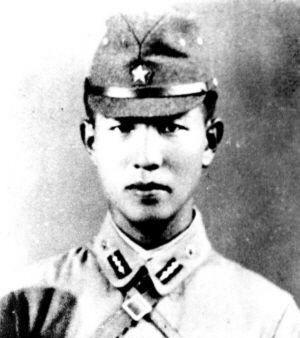After World War II, the last former Japanese soldier to be found and brought back to Japan was Hiroshi Onoda.
This guy was stationed in the Philippines in 1944, where he stayed for a full thirty years, until the beginning of 1974, when all his companions had been killed or surrendered, and it was only when Norio Suzuki, a young explorer from Japan, found himself in the jungle and persuaded him to hurry up and end this one-man war and surrender to the Philippine government.

Onoda finally got his wish, and his former boss, the long-retired former Yoshimi Sōsayaguchi, flew from Japan and read the order to him, and Onoda surrendered to the Philippine government and obtained forgiveness from the Philippine government, allowing him to return to Japan. You know, Onoda Hiroshi and a few Japanese soldiers, in these thirty years, can kill the local government troops, police, and mountain people enough, killing more than a hundred people.
Because Onoda was too adapted to the tropical rainforest climate, he returned to Japan and was not accustomed to the life of his hometown, and later went to run a farm in the tropical rainforest of Brazil, and he returned to the Philippine island of Lubang for the rest of his life to atone for his sins, donating 10,000 US dollars to the local area for education.
In World War II, such Japanese soldiers were definitely not only Onoda Hiroshi and a few of them, the other protagonist in the title of this article, his living conditions were even worse than onoda Hiroro and a few of them, After all, Onoda still had Otsuka Kanechi in twenty years. The Japanese soldier on Guam, Shoichi Yokoi, carried through twenty-seven years of solitude alone.
Born in Aichi Prefecture, Japan, Shoichi Yokoi, whose rank is Corporal of the Army, was rapidly crippled during the 1944 U.S. invasion of Guam, and the 29-year-old Yokoi Shoichi fled alone into the depths of the dense forest.
At the beginning, Yokoi Shoichi also had the idea of surrender, but he was immediately frightened by this idea of his own, you know, in Japan, where militarism is prevalent, the only consequence of returning to the surrendered soldiers is to be put into a military court and executed, even if they are lucky enough to escape the military court, they must not be drowned by the saliva of the people in their hometown!
No, never surrender!
Yokoi gave up the idea of surrender and began to fulfill this promise, the first thing he had to face was how to survive alone.
In order not to be discovered by the enemy, he went to the deep mountain, and in a very hidden place, he dug a cave, which was covered with all kinds of disguises, and even if he went close, no one could find any traces of inhabitation here.
Yokoi Shoichi, who has grown into a top hunter, has always believed that the emperor will not abandon his loyal soldiers, and one day will send rescue soldiers to rescue him, even if he once picked up the leaflet about the final battle laid by the US army, he scoffed, thinking that the American deception was too pediatric, and he insisted on constantly cheering for his choice.
Twenty-seven years of life have made Shoichi Yokoi's habits and much like a wild man, but fortunately, due to his constant self-talk and self-motivation, at least he has not completely lost his ability to speak.
In 1972, two hunters from the Guam area accidentally found the traces of Shoichi Yokoi, and 1972 was also the year that Otsuka Kanachi on the island of Lubang in the Philippines "hung up", and his companion Onoda successfully escaped again and disappeared.
After Yokoi Shoichi was discovered, he was once very worried that he would be executed when he returned to Japan, but after more than two months of psychological treatment, he slightly adapted to modern life, and the day when he returned to Japan finally came, as soon as he stepped on Japanese soil, facing the media, his first words were: "I am back, ashamed, I actually came back alive!" ”
Japanese society gave him the treatment of a "hero", and the newspapers called him the last Imperial Soldier at the time, because another "last" Imperial Soldier, Kinchi Ozo, had just "died" in battle in the Philippines, and another "last" Imperial Soldier, Hiroro Onoda, had long since disappeared.
A girl in her twenties named Mihoko took the initiative to marry Shoichi Yokoi and wanted to take care of the "hero's" life, but before long, probably because of living habits, the two could not live together. In 1997, at the age of eighty-two, Shoichi Yokoi died, and his ex-wife Mihoko Yokoi spontaneously built the Yokoi Shoichi Memorial Hall on her house in Nagoya.
Shoichi Yokoi and Hirohiro Onoda, who joined the WTO in 1972 and early 1974, are known as the "last imperial soldiers", but the real "last imperial soldier" is another person, he is Nakamura Keio, who was captured by the Indonesian army at the end of 1974, his Chinese name is Li Guanghui, yes, he is not Japanese, but Taiwanese Ami, a member of the Takasatsu Volunteer Brigade under the Imperial Japanese Army. He also spent thirty years on the Indonesian island of Morothai.
Nakamura did not choose to return to Japan to receive heroic treatment, but returned to his native Taiwan, where the Japanese government also gave him a little compensation, and he died of illness in Taiwan five years later.